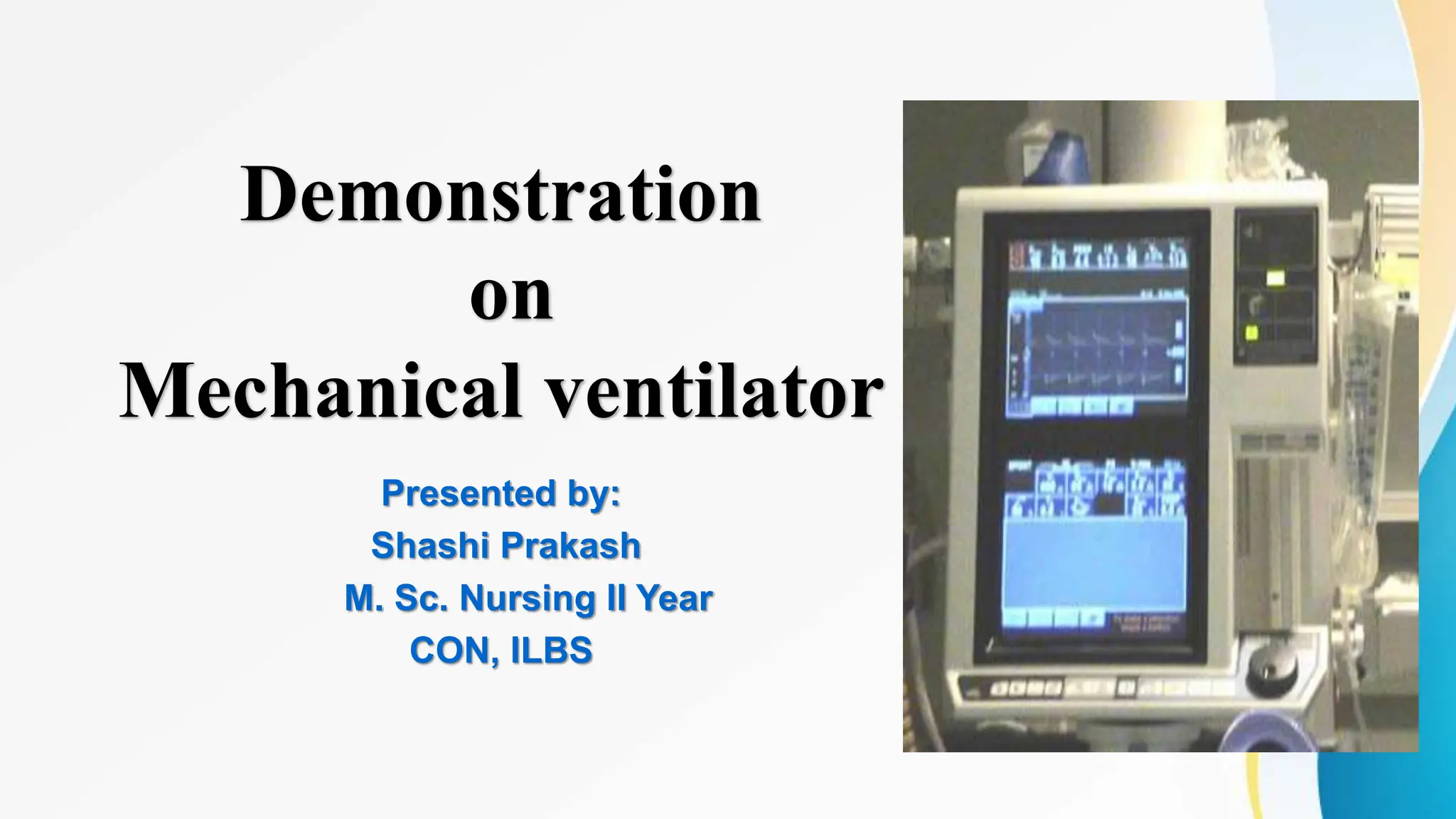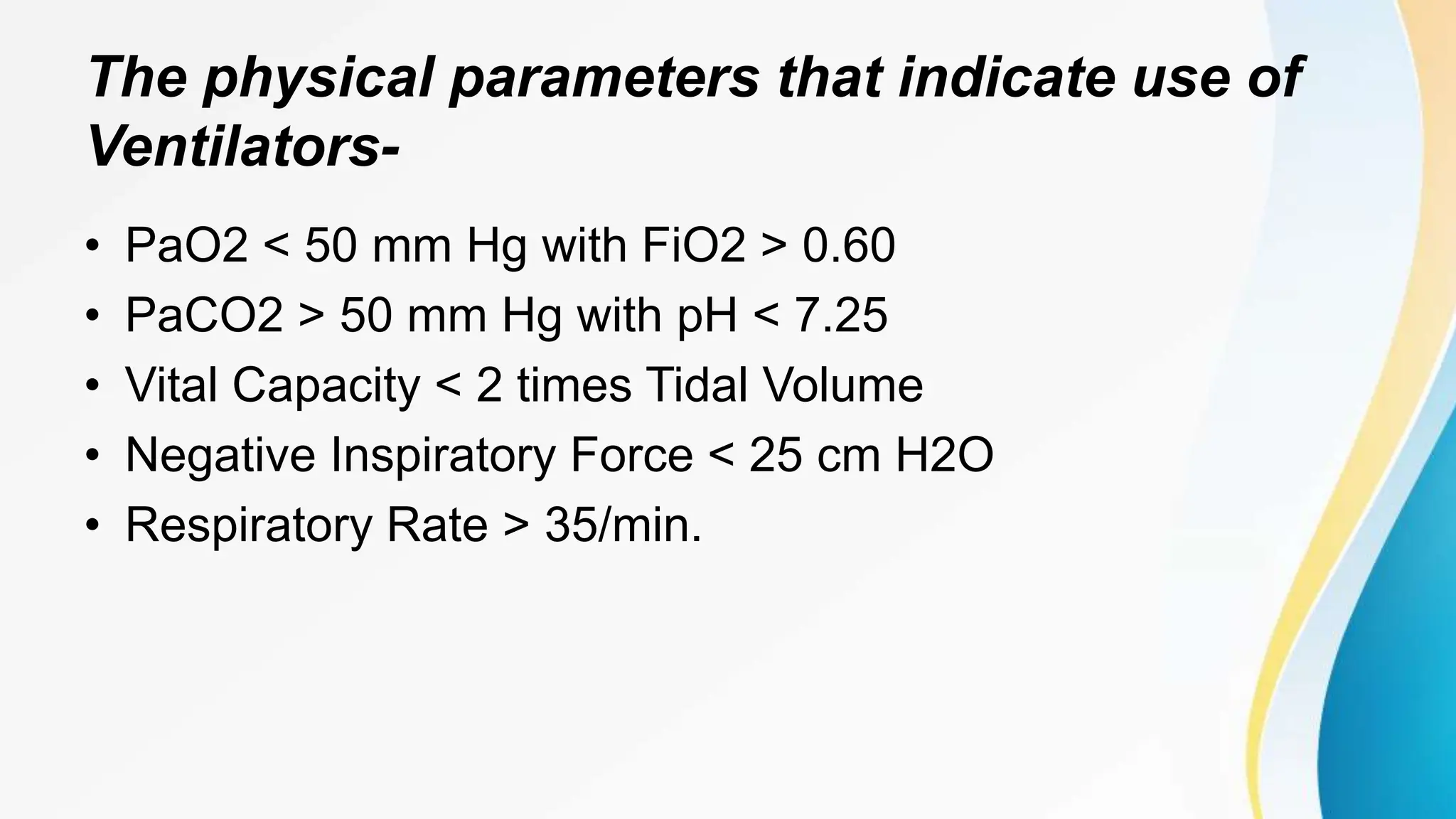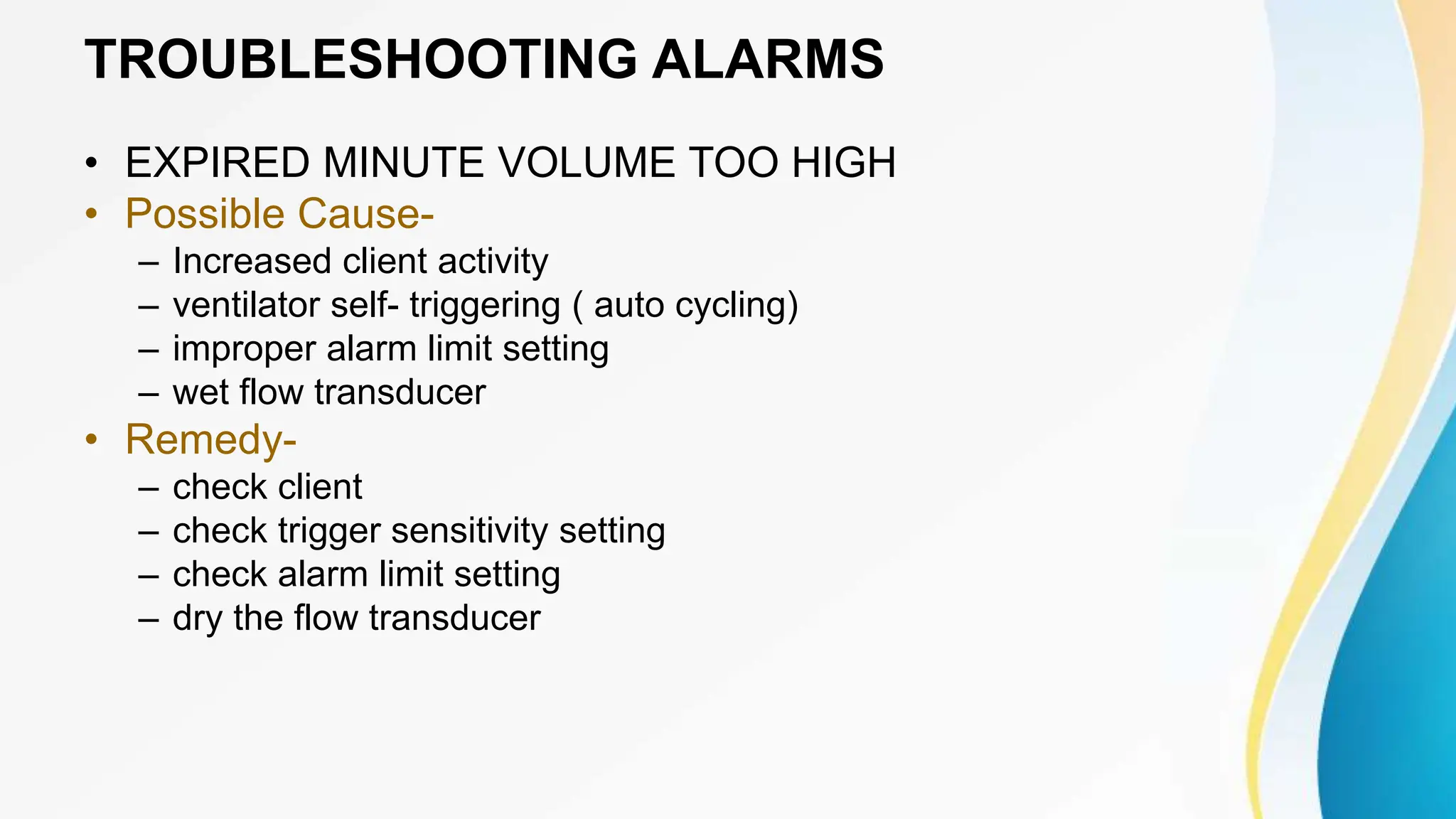This document presents a comprehensive overview of mechanical ventilation, detailing its definition, purpose, indications, and various types, including positive and negative pressure ventilators. It also discusses the normal cycle of respiration, lung volumes, ventilator settings, and common complications associated with mechanical ventilation. Additionally, the roles and responsibilities of healthcare providers, particularly nurses, in caring for patients undergoing mechanical ventilation are highlighted.


























































































































